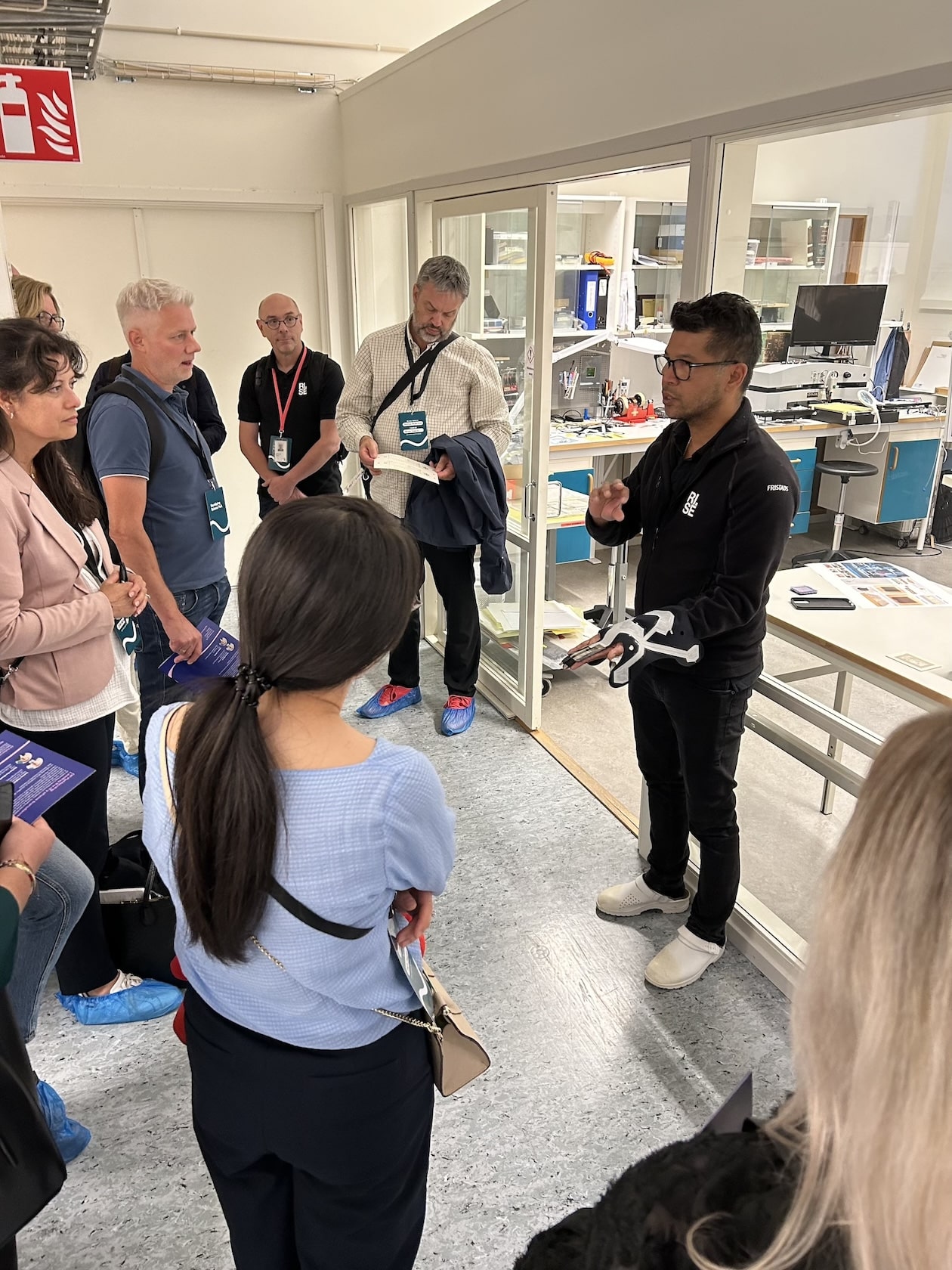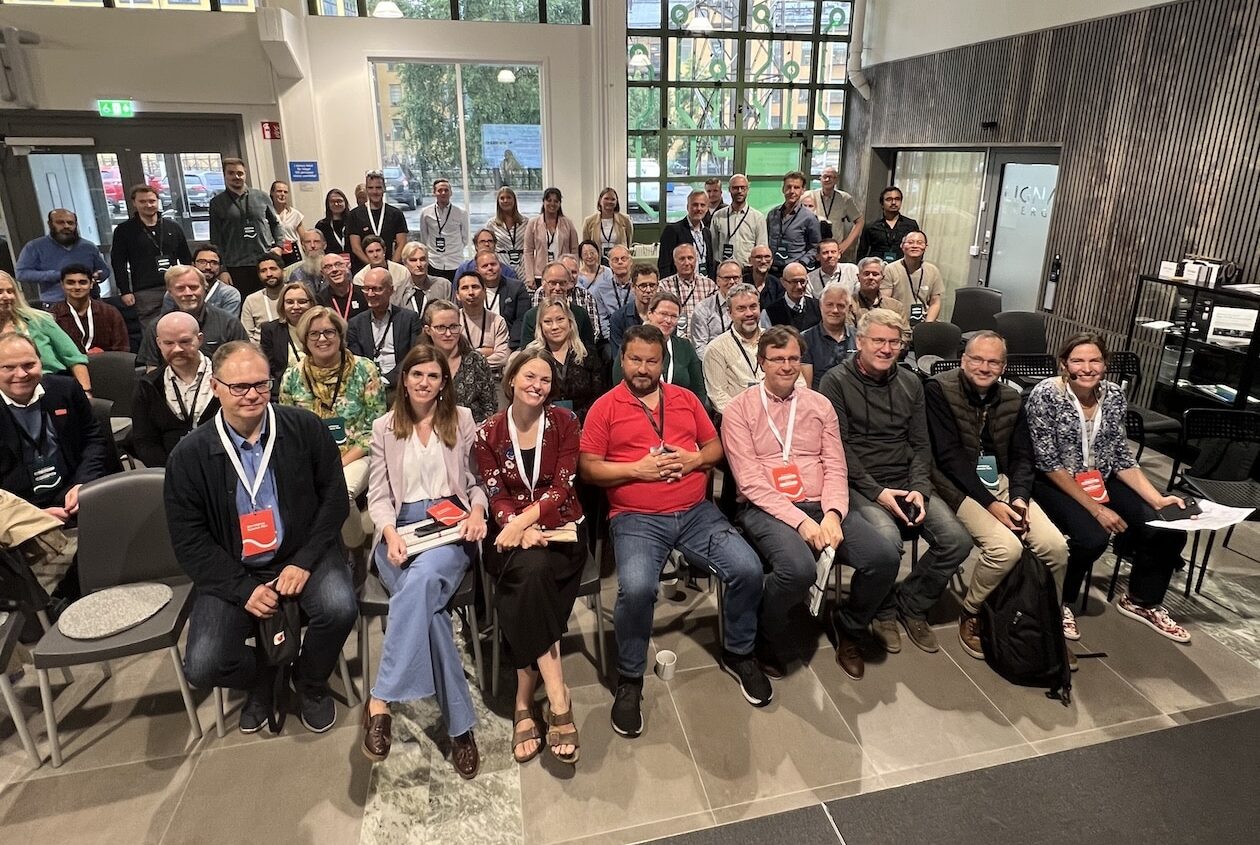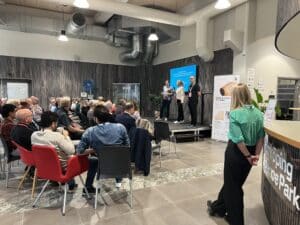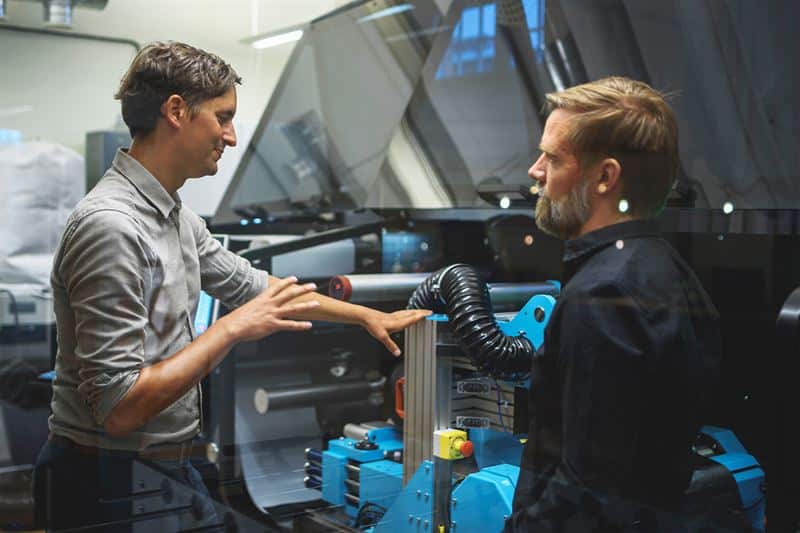Printed Electronics Brought the Industry Together in Norrköping
Last week, the inspiration days for the future production method in electronics—printed electronics—took place. During a lunch-to-lunch conference, 80 participants from across Sweden gathered in the industrial landscape of Norrköping and the premises of Norrköping Science Park. Among the participants were researchers, startups, as well as established industry.
The program offered a series of lectures showcasing groundbreaking research from Campus Norrköping, Linköping University, and RISE. Attendees also got to hear pitches from early-stage research ideas and startups, and panel discussions with leading entrepreneurs in the electronics industry.
In addition, they had the chance to experience the technology firsthand through organized tours of Campus Norrköping’s labs, RISE’s Printed Electronics Arena testbed, and the company DP Patterning, which showcased its dry-patterning technology for circuit boards.

A study visit to RISE’s Printed Electronics Arena testbed.

A study visit to DP Patterning.
The conference was a collaboration between Smartare Elektroniksystem, Svensk Elektronik, RISE, Linköping University and Norrköping Science Park. The aim was to connect the industry with the latest research and explore the possibilities of a technology that is both sustainable and cost-effective—while of course, creating networking opportunities.
“It feels fantastic that we had the opportunity to bring so many people together in Norrköping to showcase both the strength of the research being conducted here as well as the potential of printed electronics. But perhaps most importantly, we created a platform for new connections and collaboration,” says Eva Eriksson, Project Manager at Norrköping Science Park.
What is Printed Electronics?
Printed electronics refers to the process of manufacturing electronic circuits and components by printing conductive materials onto flexible surfaces like paper, plastic, or textiles. It is a cost-effective and sustainable technology that enables the production of flexible and greener electronics.
The conference was held as part of Norrköping Science Park’s projects, GIVE, supported by the Swedish Energy Agency, and HOPE, with support from Slättö, Region Östergötland, and the EU’s Regional Development Fund.
Relaterat
DP Patterning är ett teknikbolag med bas i Norrköping som utvecklat en världsunik maskin för tillverkning av flexibla kretskort. Det börsnoterade investmentbolaget Byggmästaren har insett potentialen i den banbrytande produkten och investerar initialt 25 miljoner kronor.
2 Dec 2024
Norrköping Science Park, NOSP, proudly announces the launch of the Innovate Electrochemistry (IEL) project, a novel innovation lab and ecosystem dedicated to supporting young deep-tech companies by providing world-class R&D capabilities in electrochemical flow systems. This initiative, a collaboration between Linköping University and Redoxme AB, builds upon the successful Knut-Alice Wallenberg-funded WIRA-SET project.
2 Oct 2024









Följ NOSP